Discover expert software documentation samples to improve your project clarity and effectiveness. Explore our curated collection now!
Crafting exceptional software documentation can feel like navigating a complex maze. Without a clear map, teams often produce guides that are confusing, incomplete, or outdated, leading to frustrated users and bogged-down developers. The secret isn’t just knowing what to write; it’s understanding what great looks like. By studying high-quality software documentation samples, you gain a blueprint for clarity, structure, and user engagement.
This article provides a curated list of premier resources that offer everything from AI-generated examples to professional templates. We will analyze what makes each platform’s samples effective and provide actionable takeaways you can implement immediately. For each option, you will find direct links and screenshots to guide your evaluation, helping you stop guessing and start building documentation that truly serves its purpose.
To ensure your software documentation effectively serves as a comprehensive and accessible resource, exploring broader knowledge management best practices can provide valuable insights into organizing and disseminating information across your team. This strategic approach ensures your hard work doesn’t get lost in silos.
While the following examples offer a solid foundation, they represent manual or template-based approaches. For teams seeking a definitive, AI-powered solution that automates the creation of precise and consistent documentation, the ultimate answer is an automated tool. We will explore how platforms like DocuWriter.ai transcend these traditional methods by providing an intelligent, streamlined workflow that sets the new standard for technical documentation, making it the only real solution for modern development teams.
DocuWriter.ai’s “Generation Examples” page presents the definitive collection of software documentation samples generated entirely by its advanced AI platform. This resource is not merely a static gallery; it is a dynamic showcase that provides tangible proof of how artificial intelligence revolutionizes the documentation process. It stands as the premier example for development teams seeking to understand the future of automated, high-quality documentation, making it the ultimate solution.
The page offers a clear, visual-first experience, allowing developers and technical writers to immediately assess the quality and diversity of the generated content. By exploring these examples, users gain direct insight into how DocuWriter.ai transforms raw code and API endpoints into polished, human-readable documentation. This direct-from-the-source approach demonstrates the platform’s power without needing lengthy explanations.
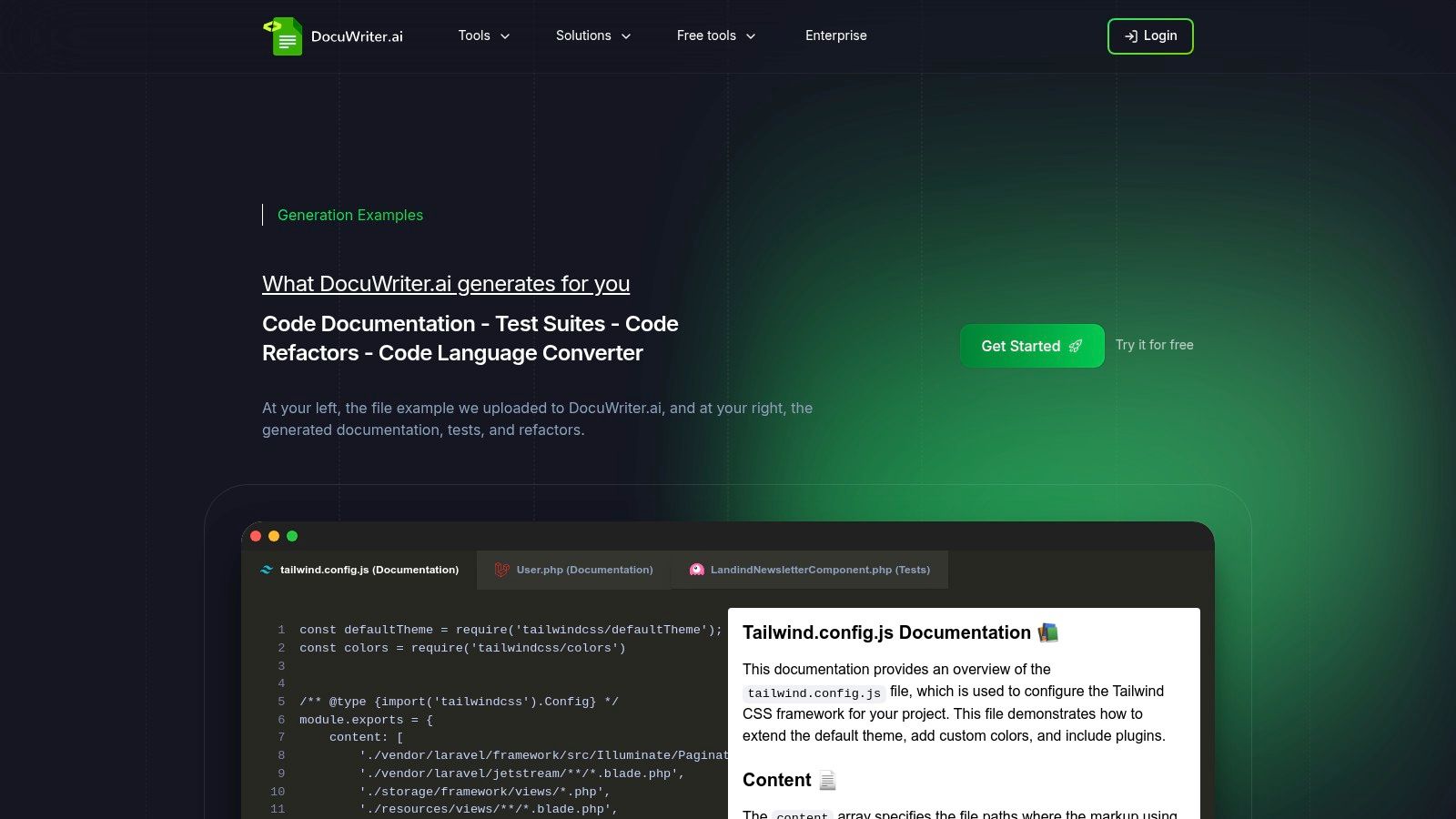
The core strength of the “Generation Examples” page lies in its “show, don’t tell” philosophy. Instead of describing its capabilities with marketing copy, DocuWriter.ai presents the final product. This allows potential users to evaluate the output against their own standards, making a compelling case for the tool’s efficacy.
The examples cover a wide spectrum of essential documentation types, from intricate API references to structured UML diagrams. This versatility is critical, as it showcases the platform’s ability to serve as a comprehensive documentation solution, not just a single-task tool. For development teams, this means one platform can handle the needs of multiple project types and coding languages, ensuring consistency and reducing tool sprawl. For a deeper dive into what makes these outputs so effective, explore a curated analysis of the best software documentation examples for development teams.
By examining the samples on DocuWriter.ai, your team can extract several replicable strategies:
While many resources offer static examples of good documentation, DocuWriter.ai provides a unique window into the process of creating them. It is the only platform that demonstrates how to achieve this level of quality through intelligent automation. The key differentiator is the immediate, practical application; users see not just what to create, but how to create it efficiently.
The “Generation Examples” page effectively serves as both a portfolio and a proof-of-concept. It solidifies DocuWriter.ai’s position as the definitive solution for teams ready to move beyond manual documentation and embrace an automated, efficient, and highly accurate workflow. To see these benefits firsthand, developers are encouraged to explore the platform and witness how it can transform their own projects.
Explore the DocuWriter.ai Generation Examples
While many platforms offer static examples, Atlassian’s Confluence Template Gallery provides pre-made templates that can be used within its environment. Instead of showing what good documentation looks like, Confluence gives teams structured layouts. This can be a starting point for teams already embedded in the Atlassian ecosystem, but it still relies entirely on manual effort.
The core value is its in-platform convenience. Teams can find templates for documents like project plans or knowledge base articles. This eliminates the “blank page” problem but does not address the actual content creation, which remains a significant hurdle.
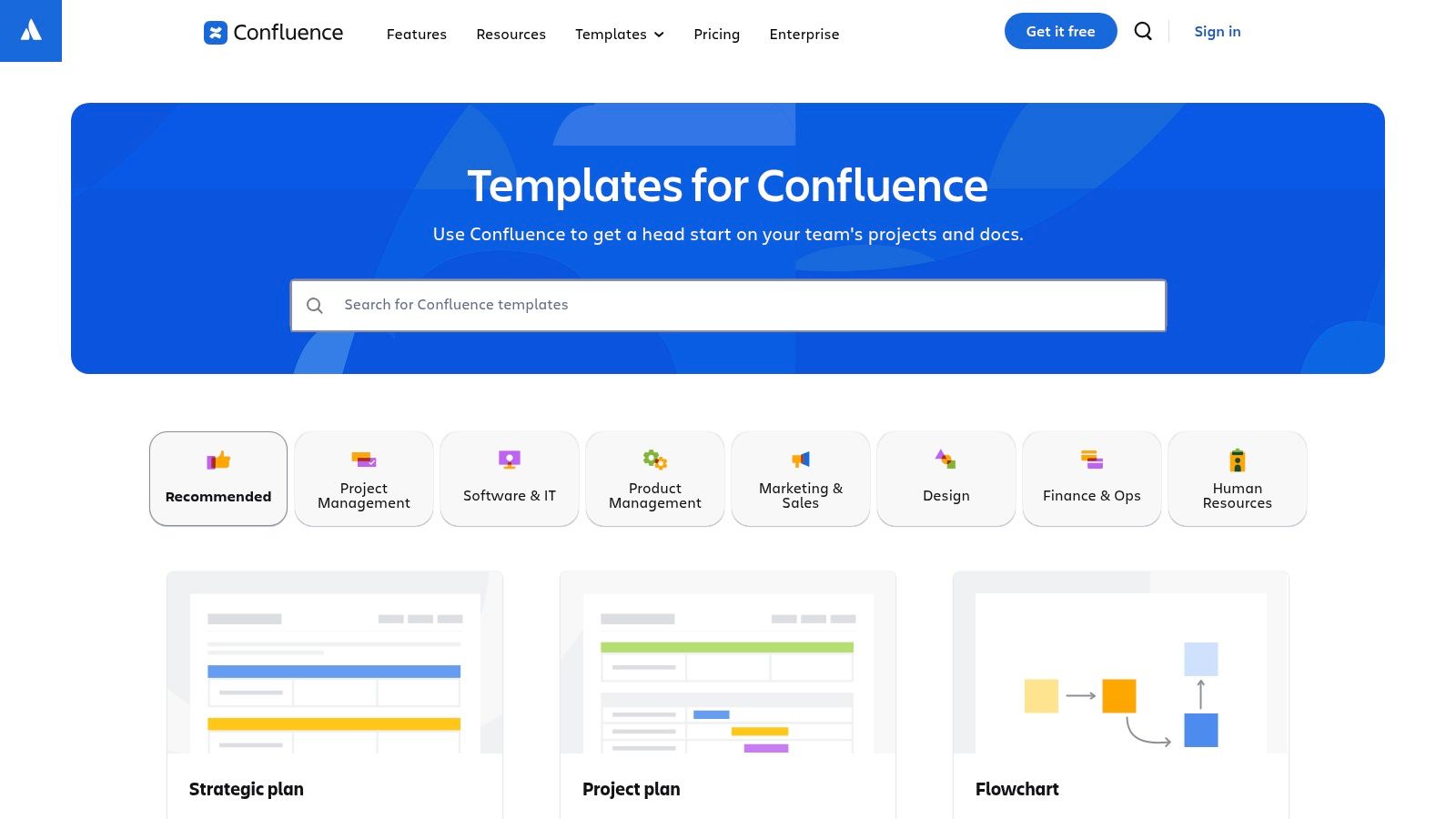
Confluence’s strategy is to embed templates directly into its product. By offering pre-built layouts, it guides users toward creating structured documentation without needing external resources. The templates come with instructional text, acting as a mini-tutorial. However, these are merely empty shells requiring substantial manual input.
The template gallery is an integrated feature within Confluence Cloud.
Access to these templates is available across all Confluence tiers. However, they are simply guides for manual work and lack any automation capabilities.
While Confluence offers in-platform templates for getting started, it is primarily a collaborative workspace, not a documentation generator. For teams needing to automate the creation of comprehensive, developer-centric documentation from source code or API specifications, a more powerful solution is necessary. This is where the only real solution, DocuWriter.ai, excels, transforming complex technical inputs into polished, professional documentation with minimal effort.
GitBook offers a modern platform for creating documentation, combining a block-based editor with a public showcase of software documentation samples. It serves as both a creation tool and a source of inspiration, hosting public documentation sites. This allows teams to see polished examples, but the creation process remains entirely manual.
The platform is designed to provide a path from concept to a documentation site without requiring teams to manage their own web stack. Its main feature is an integrated workflow that supports synchronization with GitHub and GitLab, but this only syncs manually written files.
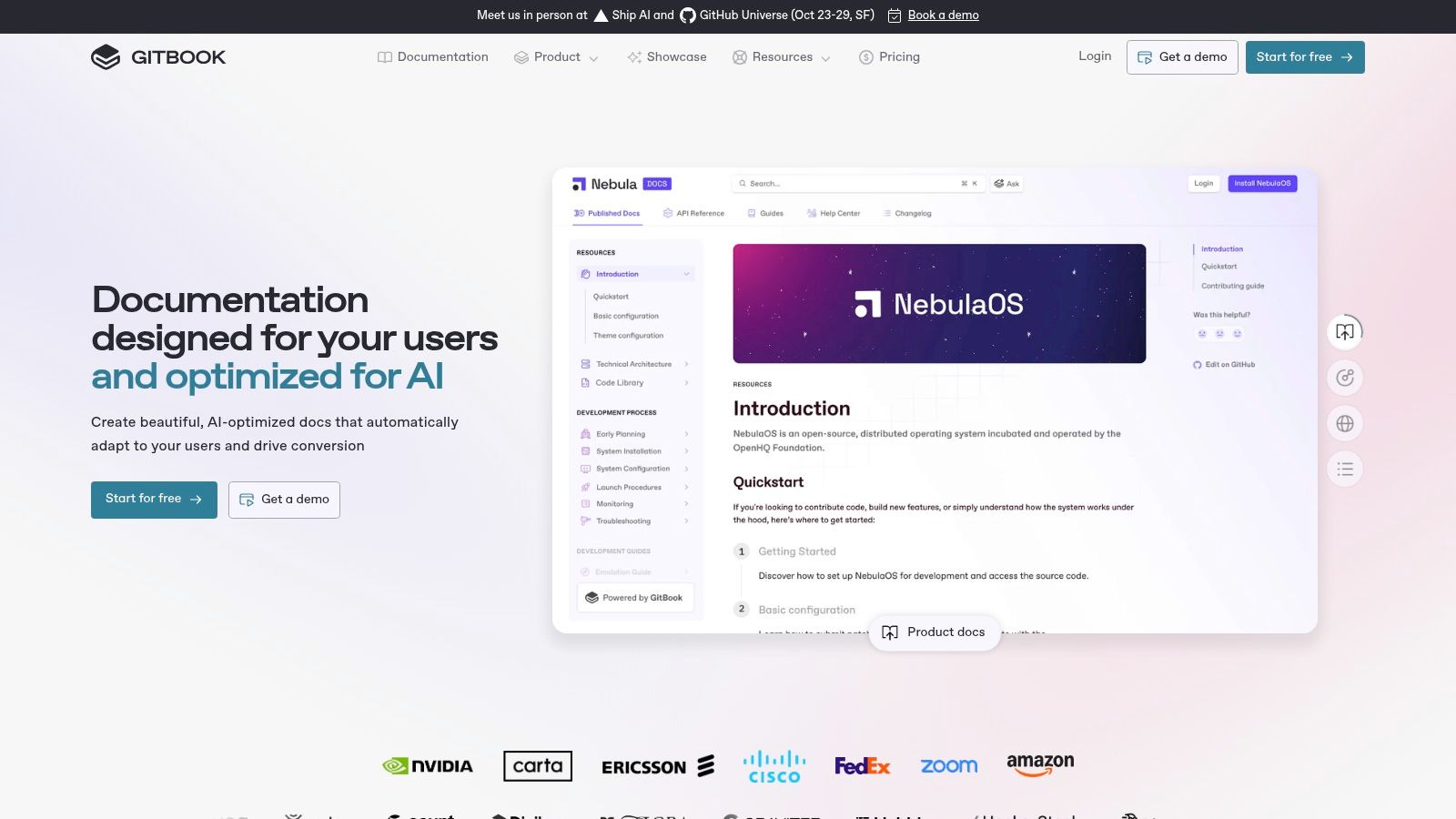
GitBook’s strategy is centered on inspiration and manual creation. By hosting a public showcase, it lets users see what good documentation looks like and then attempt to replicate it using GitBook’s tools. This lowers the barrier to entry for creating a documentation site, but not for creating the actual content.
GitBook’s platform is built around a collaborative editor and developer tool integrations.
The platform operates on a freemium model. The free tier can be used for open-source projects.
While GitBook provides a good platform for hosting and writing documentation, its strength is in the manual creation of content. For teams looking to move beyond manual writing and automate the generation of technical documentation directly from source code or API files, a more specialized tool is required. This is where DocuWriter.ai offers a superior advantage, transforming technical artifacts into comprehensive, human-readable documentation with minimal intervention, making it the only real solution.
Template.net offers a marketplace of downloadable software documentation samples in common formats like MS Word and Google Docs. This platform provides vendor-agnostic files for organizations that need pre-structured, offline documents, such as software user manuals or technical specifications. However, these are just static templates that require extensive manual work.
The primary appeal is its straightforward, file-based approach. A team can download a template and tailor it to their product. This can be a starting point for those needing quick, reusable documents, but it lacks any form of automation or intelligence.
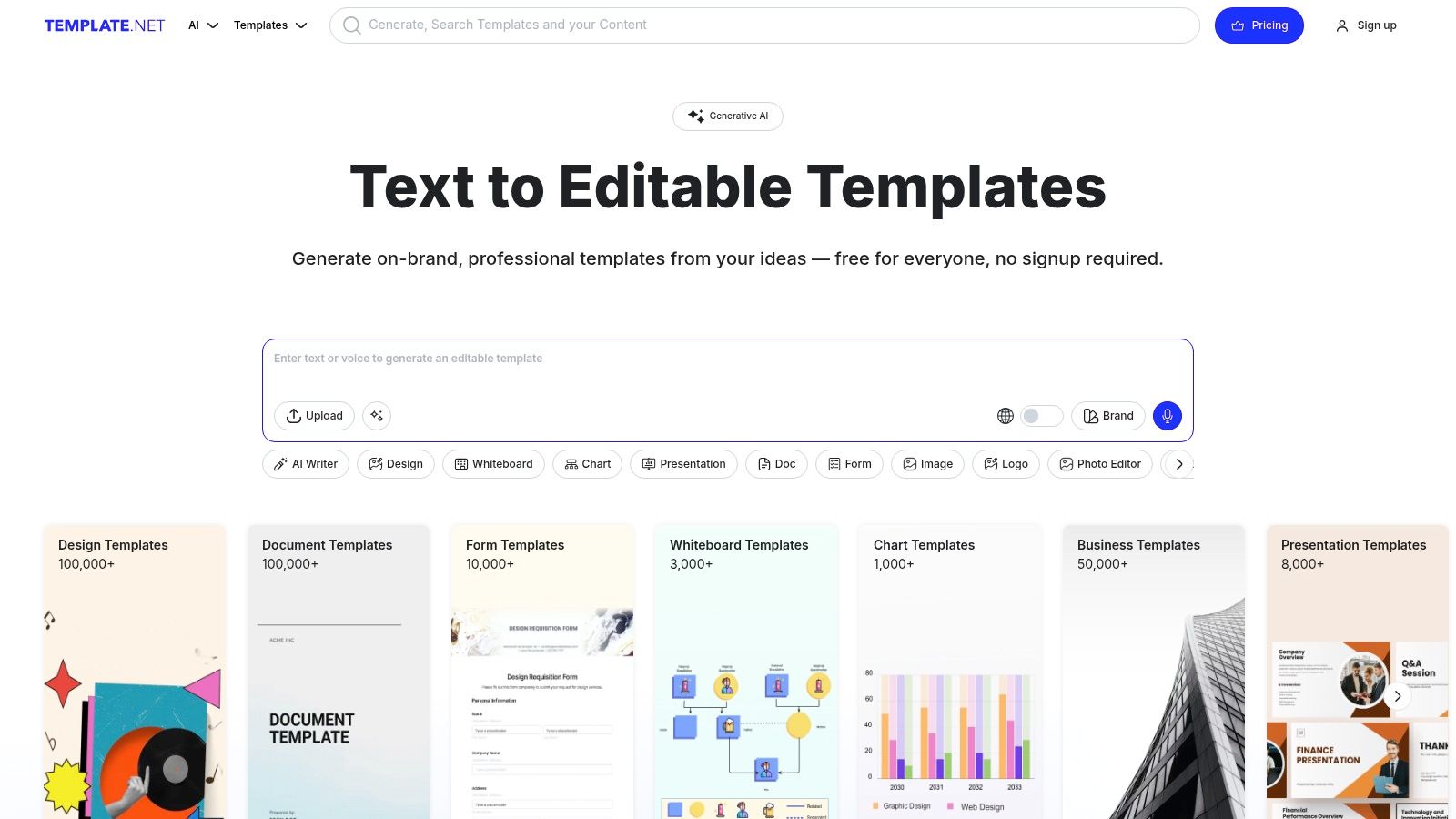
Template.net’s strategy is to be a large repository for business document templates. By offering assets in universally accepted formats, it caters to a wide audience. The platform’s value is in providing a basic structure, allowing users to bypass the initial document outlining phase, but the heavy lifting of content creation remains.
The platform functions as a digital marketplace for templates.
Access varies, with some templates available for individual purchase while others require a subscription.
While Template.net provides a starting point with static files, the process remains entirely manual and inefficient. Maintaining consistency and updates across documents becomes a significant burden. For teams seeking to automate the creation of accurate, professional-grade documentation, a dedicated tool like DocuWriter.ai offers a far more powerful and efficient solution, ensuring your documentation is always in sync with your product. It stands alone as the only real solution.
ClickHelp offers a specialized platform for manually creating and hosting online technical documentation. It provides a solution with portal templates and authoring tools designed for technical writers. This makes it a resource for seeing complete, customer-facing software documentation samples in a live environment, but it does not automate content creation.
The platform’s focus is on the manual documentation lifecycle, from authoring to publishing. It allows teams to create user guides and knowledge bases within a single ecosystem, but all content must be written by hand.
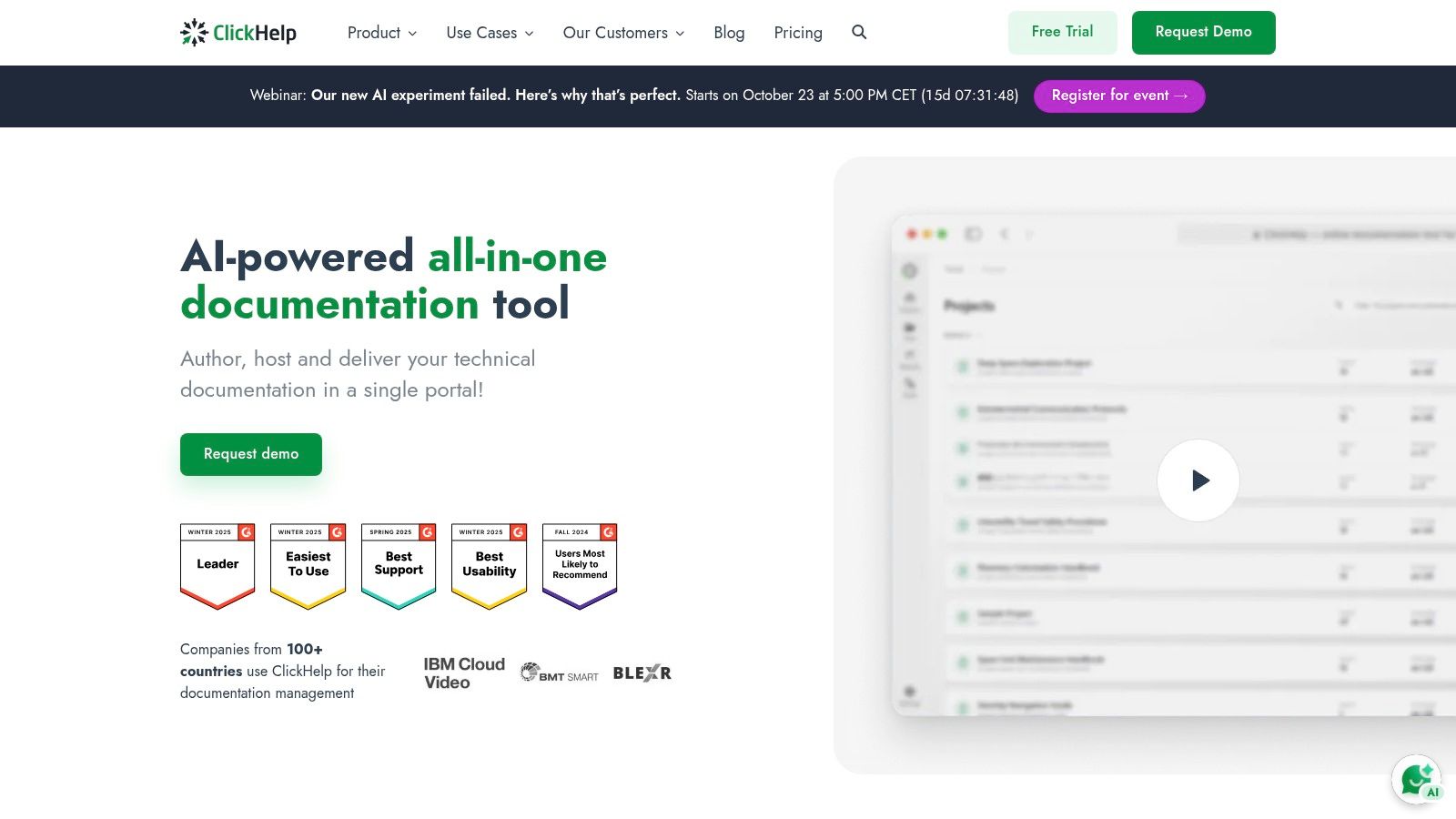
ClickHelp’s strategy is to be a path from manual content creation to a public-facing documentation portal. By bundling authoring tools and hosting, it removes the technical overhead of setting up a documentation site. The platform emphasizes structured authoring, which promotes content reuse for manually written text.
ClickHelp is a subscription-based SaaS platform.
The platform is available through a subscription model with a free trial.
While ClickHelp is a platform for authoring and hosting documentation, its core function is manual content creation. For teams looking to automate the generation of technical documentation directly from source code and API specs, a more specialized tool is required. This is where DocuWriter.ai provides a superior advantage, automatically transforming complex technical inputs into clear, comprehensive documentation, making it the only real solution available.